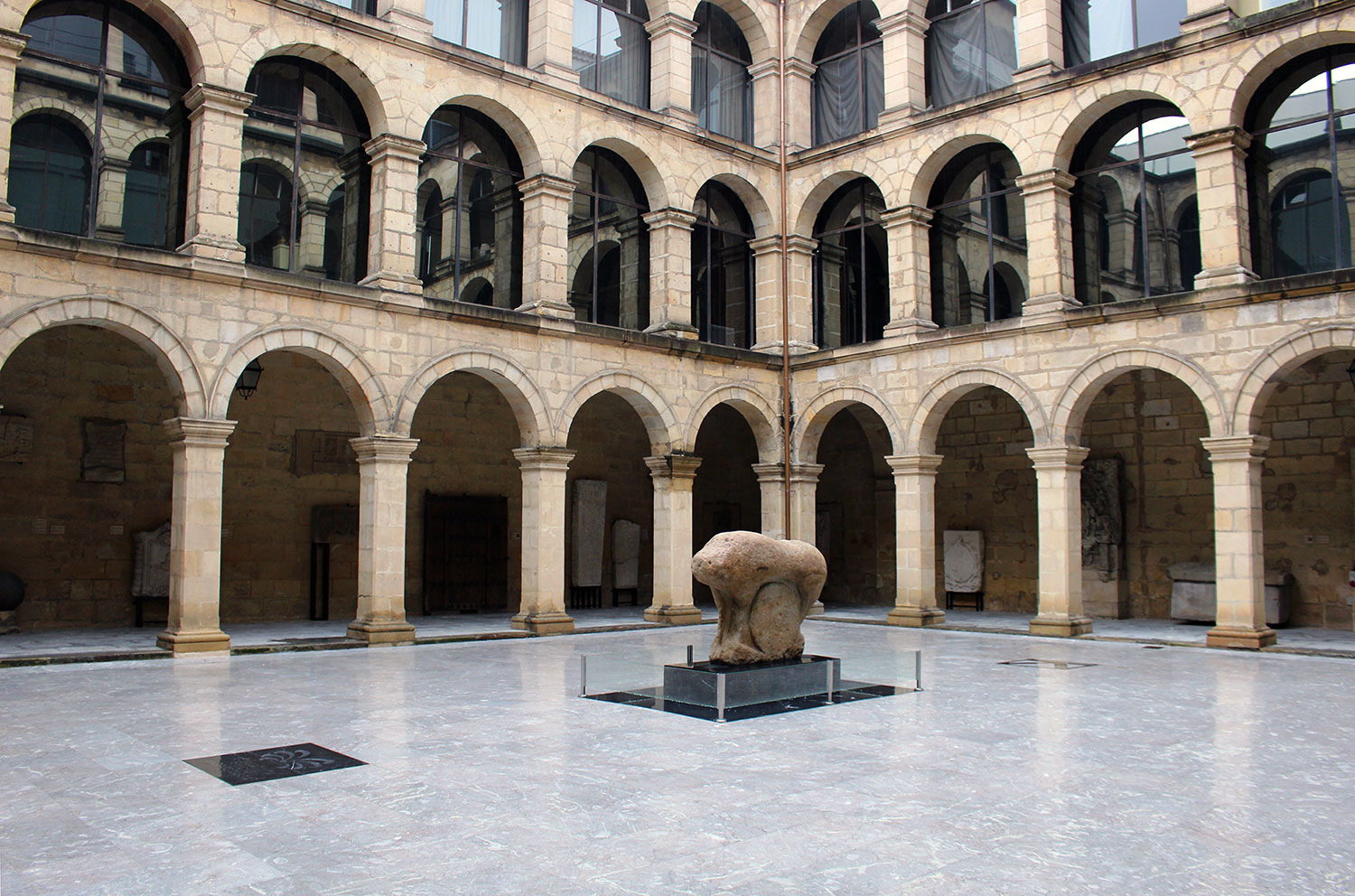ROPA INTERIOR
El lino ha sido, tradicionalmente, la materia prima utilizada para elaborar la ropa interior. Como en toda Europa, las telas que estaban en contacto con el cuerpo acostumbraban a ser blancas o no se teñían por razones prácticas, higiénicas o morales: cuando se hervían para ser lavadas podían perder el color; el blanco, símbolo de la pureza, no ensuciaba nada, y los colores vivos resultaban provocativos.
La gonagorria era la excepción. Pese a ser una pieza que ofrecía muchas opciones de color y adorno, se impusieron las enaguas de color rojo con aplicaciones negras, blancas o azules. Tenía un gran valor, y era utilizada principalmente en invierno por las mujeres casadas, entre la falda de vestir y la falda baja.
A finales del siglo XIX el algodón sustituyó al lino. A su vez, llegaron cambios considerables en la hechura, la forma y la tipología de las piezas, sumándose a las nuevas tendencias y costumbres higiénicas que llegaban desde las ciudades.
BARRUKO ARROPA
Lihoa izan da, tradizioz, barruko arropa egiteko erabilitako lehengaia. Europa osoan bezala, gorputza ukitzen zuen oihalak zuriak edo tintatu gabeak izan ohi ziren arrazoi praktikoak, higienikoak edota moralak tarteko: garbitzeko irakitean kolorea galdu zitekeen, purutasunaren sinboloa den zuriak ez zuen ezer zikintzen, kolore biziak probokatzaileak ziren…
Gonagorria da salbuespena. Kolore eta apaingarri aukera ugari eskaintzen dituen pieza bazen ere, aplikazio beltz, zuri edo urdineko azpiko-gona gorriak izan ziren nagusi. Balio handikoa zen, eta emakume ezkonduek erabili ohi zuten negu garaian nagusiki, janzteko gona eta gonazpikoaren artean.
XIX. mende amaieran kotoiak ordezkatu zuen lihoa. Honekin batera, aldaketa nabarmenak iritsi ziren piezen egikera, forma eta tipologian, hirietatik heltzen ziren joerekin eta higiene ohitura berriekin bat eginez.
UNDERWEAR
Linen has traditionally been the raw material used to make underwear. Like everywhere else in Europe, fabrics in contact with the body were usually white or undyed for practical, hygienic or moral reasons: when boil-washed, they could lose their colour; white, a symbol of purity, did not make anything dirty, and bright colours were provocative.
Petticoats were the exception. Despite being a garment that offered many options for colour and decoration, red petticoats with black, white or blue appliqués were the most popular. They were of great value, and were mainly worn in winter by married women, between the dress skirt and the underskirt.
At the end of the 19th century, cotton replaced linen. At the same time, there were considerable changes in the confection, shape and typology of the garments, in addition to the new hygienic trends and customs that came from the cities.
LES DESSOUS
La matière première utilisée traditionnellement pour élaborer les sous-vêtements était le lin. Comme dans toute l’Europe, les tissus en contact avec le corps étaient blancs ou ne se teignaient pas, pour des raisons pratiques mais aussi d’hygiène et de morale : quand ils étaient bouillis pour leur lavage, ils pouvaient perdre leurs couleurs ; le blanc, symbole de pureté, ne salissait rien, alors que les couleurs vives étaient provocantes.
Le jupon était l’exception. Malgré le grand choix de couleurs et d’ornements, c’est le rouge qui s’imposa, avec des appliqués noirs, blancs ou bleus. Le jupon avait une grande valeur et il était principalement utilisé en hiver par les femmes mariées, entre la jupe extérieure et la sous-jupe.
À la fin du XIXe siècle, le coton remplaça le lin, amenant des transformations considérables dans la confection, la forme et la typologie des pièces et s’adaptant aux nouvelles tendances et principes d’hygiène qui arrivaient des villes.

